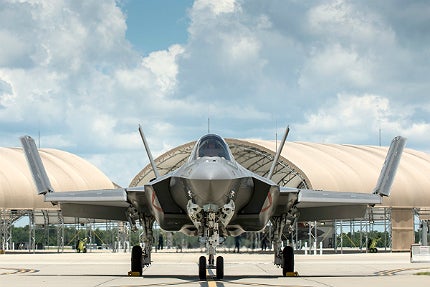

Japan receives first AQS-24A mine-hunting system from Northrop
The Japanese Maritime Self-Defence Force (JMSDF) has received the first of four AQS-24A airborne mine-hunting systems from Northrop Grumman for integration onto its Kawasaki Heavy Industries-built airborne mine countermeasure MCH-101 helicopters.
Delivery follows a contract previously awarded to the company to supply a total of four AQS-24A airborne mine hunting systems in support of the JMSDF’s new MCH-101 helicopter platform.
Northrop Grumman Undersea Systems business unit vice-president Tom Jones said the AQS-24A airborne mine-hunting vehicle delivery marked a major milestone in the Japan’s airborne mine-hunting capability development.
Russian Navy’s Mistral-Class vessel construction moves ahead
The Russian Navy has rolled out the stern of first Mistral-Class amphibious assault ship Vladivostok following its completion, according to a Russian shipyard.
In June 2011, Russia and France signed a $1.2bn contract for two French-built Mistral-Class amphibious assault ships for the Russian Navy and for the sensitive technology transfer, according to RIA Novosti.
As part of an intergovernmental agreement, Russia will also procure two additional Mistral-Class ships, which will be built 80% in Russia and 20% in France.
OSI to support of Royal Malaysian Navy’s LCS programme
OSI Maritime Systems (OSI) has been awarded a contract by Boustead Naval Shipyard (BNS) to deliver integrated navigation and tactical systems (INTS) for the Royal Malaysian Navy’s Gowind-class corvettes.
Under the contract, OSI will supply six INTS, in addition to electronic chart precise integrated system (ECPINS) warship (W) and Warship-AIS (W-ASI), which has been designed specifically for naval operations.
The INTS is a fully scalable tactical navigation solution and has been designed to meet the requirements of the most demanding military environments, from vessels to large offshore ships.
Indian MoD issues surface surveillance radar tender
The Indian Ministry of Defence (MoD) has floated tenders for the purchase of surface surveillance radars (SSR) from domestic companies.
A total of 31 SSRs and one SSR training simulator are scheduled to be acquired by the ministry at a cost of more than $300m, as part of the government’s programme aimed at meeting the Indian Navy’s operational requirements, according to Defense News.
As part of the tender, the Indian firms have partnered with foreign companies to procure technology needed for the competition.
US Navy receives first F-35C carrier variant aircraft from Lockheed
The US Navy has taken delivery of the first F-35C Lightning II joint strike fighter (JSF) carrier variant aircraft from Lockheed Martin to Strike Fighter Squadron (VFA) 101 at Eglin Air Force Base, Florida.
Scheduled to achieve initial operational capability in 2019, the F-35C catapult-assisted takeoff barrier arrested recovery (CATOBAR) aircraft features advanced stealth technology with fighter speed and agility, fully fused sensor information, network-enabled operations and advanced sustainment.
Lockheed Martin executive vice-president and F-35 programme general manager Lorraine Martin said: "The F-35 represents the new standard in weapon systems integration, maintainability, combat radius and payload that brings true multimission capability to the navy."
Australia shortlists contract bidders for HATS programme
The Australian Ministry of Defence (MoD) has selected three contract bidders for the Project Air 9000 Phase 7 helicopter aircrew training system (HATS), marking the beginning of second phase of the competition.
Australian Aerospace, Boeing Defense Australia and Raytheon Australia have been shortlisted from the responses to the HATS request for tender issued in early 2012, defence minister Stephen Smith and defence materiel minister Dr Mike Kelly said in a joint statement.
The programme is aimed to provide new joint HATS for the Royal Australian Navy (RAN), which will be deployed at Nowra, New South Wales, Australia.
US NRL develops PEEK-like phthalonitrile-resin for marine applications
Scientists from the US Naval Research Laboratory (NRL) Chemistry Division have designed and developed a second-generation, cost-effective polyetheretherketone (PEEK) similar phthalonitrile-resin for several marine, aerospace and domestic applications.
Featuring superior high-temperature, flammability and low water absorption properties, the resin can be used to develop composite components using industrial methods, such as resin-transfer moulding (RTM), resin-infusion molding (RIM), filament winding and prepreg consolidation.
The organic compound can also be used for manufacturing parts by using automated composite manufacturing techniques, including automated tape laying and automated fibre placement.
Iranian Navy re-launches upgraded Bayandor ship
The Iranian Navy has re-launched its newly modernised ship, Bayandor, in the southern port of Bandar Abbas, aimed at boosting the nation’s ability to protect and maintain security in regional and international waters.
Fars News Agency cited Iranian Army commander major general Ataollah Salehi as a saying that the upgraded vessel would be deployed in the high seas and free waters to leverage the Iranian Navy’s capabilities.
Upgrades to the vessel include optimising the monitoring control systems and overhauling the main engines, heat exchangers and fuel and oil systems.
Related content
At-sea simulation strategies
Tasked with saving the lives of other crew, gunners require supreme maritime marksmanship honed by hours of training.
May’s top stories: Syria armed and South Korea watchful
Russia delivered advanced anti-ship and air missiles to Syria as violence in the country continued to flare, while South Korea will seek 20 new maritime patrol aircraft to keep an eye on North Korean rocket launches.



.gif)

